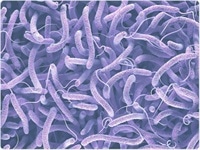Since the early days of the coronavirus disease pandemic, we have been hearing about ventilators, their shortage and importance. But what are ventilators, and how do they help in the fight against the coronavirus disease?
For patients with the worst effects of the infection, a ventilator offers the best chance of survival.
What is a ventilator and what does it do?
Simply put, a ventilator takes over the body’s breathing process when disease has caused the lungs to fail.
This gives the patient time to fight off the infection and recover.
Various types of medical ventilation can be used.

According to the World Health Organization (WHO), some 80% of people with Covid-19 – the disease caused by coronavirus – recover without needing hospital treatment.
But one person in six becomes seriously ill and can develop breathing difficulties.
In these severe cases, the virus causes damage to the lungs. The body’s immune system detects this and expands blood vessels so more immune cells enter.
But this can cause fluid to enter the lungs, making it harder to breathe, and causing the body’s oxygen levels to drop.
To alleviate this, a machine ventilator is used to push air, with increased levels of oxygen, into the lungs.
The ventilator also has a humidifier, which modifies adds heat and moisture to the medical air so it matches the patient’s body temperature.
Patients are given medication to relax the respiratory muscles so their breathing can be fully regulated by the machine.
People with milder symptoms may be given ventilation using facemasks, nasal masks or mouthpieces which allow pressurised air or mixtures of gases to be pushed into the lungs.
Hoods, where pressurised oxygen is pumped in via a valve, are also being commonly used to treat Covid-19 patients, partly because they reduce the risk of airborne transmission of the virus from droplets in the breath.
These are known as “non-invasive” ventilation, as no internal tubes are required.
However, Intensive Care Units (ICUs) would generally put patients suffering acute respiratory distress on mechanical ventilation quickly, to ensure oxygen levels in the body stay normal.
Dr Shondipon Laha, from the Intensive Care Society, told the BBC most patients with Covid-19 would not need a mechanical ventilator and could be treated at home or with supplementary oxygen.
But although there were risks when using ventilators, such as not knowing who would suffer long-term effects, he said, sometimes a ventilator was “the only way of getting oxygen into the patient”.
Another issue, Dr Laha explained, was having enough of the right staff in place to manage all the ventilators expected to be needed.
“A ventilator is a complex beast – it can cause a patient trauma if not set up properly,” he said. “The technical aspects are challenging. People have knowledge – we can use anaesthetists – but the knowledge base is different.
“They are used to preparing relatively healthy people for theatre. ICU patients are much more fragile.”
How many ventilators does Nigeria have – and how many might we need?
There is no accurate information on how many ventilators we currently have in Nigeria, but according to a report by Punch, Nigeria has less than 500 ventilators.
The FG will release N6.5 Billion to the NCDC according to the Finance Minister, Zainab Ahmed has said. Ventilators are believed to be among the things to be acquired by the NCDC to boost the fight against the novel coronavirus disease.
Lack of adequate testing kits has been highlighted by some experts as the reason why we have low number of coronavirus cases in Nigeria, as the NCDC was able to conduct only 152 tests as of 22nd March, 2020.


